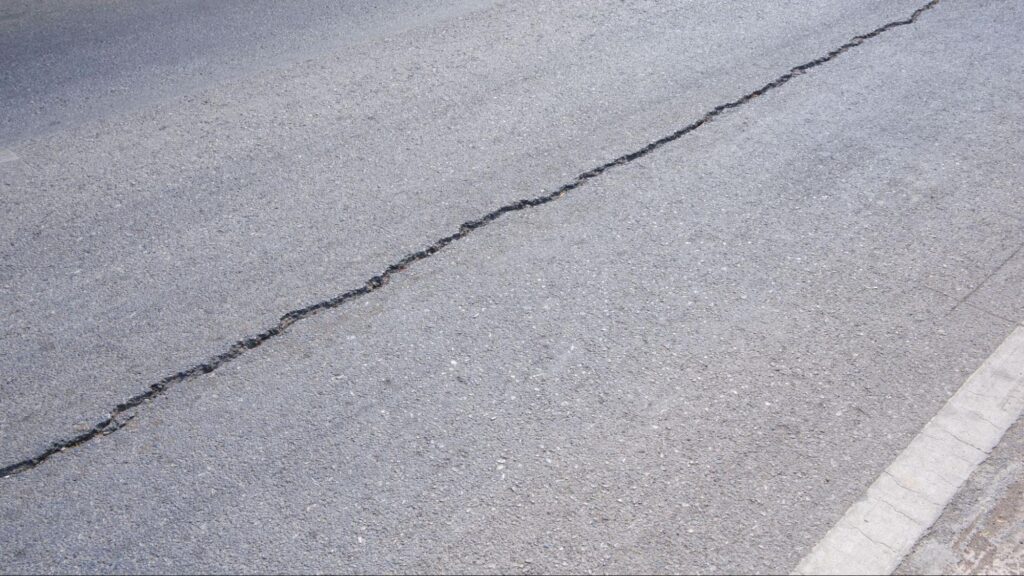Asphalt cracks are a common issue that can affect roads, driveways, and parking lots. While they may seem like minor imperfections at first, if left unaddressed, they can lead to more significant damage, higher repair costs, and unsafe surfaces. Understanding the causes behind asphalt cracks and knowing the best solutions to address them is essential for maintaining the longevity of any asphalt surface.
Common Causes of Asphalt Cracks
Temperature Fluctuations
One of the primary causes of asphalt cracking is extreme temperature changes. Asphalt expands in the heat and contracts in the cold. Over time, these cycles of expansion and contraction cause the surface to weaken, eventually leading to cracks. In regions with harsh winters or hot summers, this process can accelerate, causing frequent cracking.
Water Penetration
Water is one of asphalt’s worst enemies. When water seeps into small cracks and the temperature drops below freezing, the water expands as it turns to ice, widening the cracks. This process, known as the freeze-thaw cycle, is particularly damaging and can lead to significant structural issues if not addressed promptly.
Poor Installation or Subbase Issues
The quality of the initial asphalt installation plays a crucial role in its durability. If the base layer beneath the asphalt is not properly compacted, it can shift over time, causing the asphalt to crack. A weak or improperly prepared subbase will not be able to support the weight of traffic, leading to early cracking and surface degradation.
Heavy Traffic and Loads
Areas with heavy vehicle traffic or frequent exposure to large trucks are more susceptible to cracking. The repeated pressure and weight of vehicles can cause stress on the asphalt surface, leading to fatigue cracks. Over time, this stress weakens the asphalt, making it more prone to developing cracks.

H2: Common Types of Asphalt Cracks
Alligator Cracks
Alligator cracking, also known as fatigue cracking, resembles the scales of an alligator’s skin. It’s usually caused by traffic load combined with an insufficient base or subgrade layer. This type of crack indicates that the underlying layers of asphalt have deteriorated and need comprehensive repair.
Linear Cracks
Linear or longitudinal cracks run parallel to the asphalt surface. These cracks are typically caused by temperature fluctuations and the natural aging process of the asphalt. While linear cracks may seem harmless initially, they can widen over time if not sealed promptly.
Block Cracks
Block cracks form in a rectangular pattern and occur due to shrinking and expanding asphalt, often caused by temperature changes and an aged, brittle surface. These cracks don’t necessarily indicate a structural issue but should be sealed to prevent water penetration.
Effective Solutions for Asphalt Cracks
Crack Sealing
Crack sealing is one of the most cost-effective ways to prevent further damage. Sealing small cracks as soon as they appear helps prevent water from seeping into the asphalt and expanding the cracks. It’s a quick and simple solution that can significantly extend the lifespan of the asphalt surface.
Patching
Patching the asphalt may be necessary for larger cracks or potholes. Patching involves filling the damaged area with new asphalt, ensuring a smooth and even surface. This solution is ideal for localized damage and can prevent further deterioration.
Overlaying
If the surface has extensive cracking, an overlay may be the best solution. This involves applying a new layer of asphalt over the existing surface. While more expensive than sealing or patching, an overlay can provide a fresh, smooth surface and significantly extend the life of the asphalt.
Full-Depth Replacement
In cases where the damage extends to the base layer, full-depth replacement may be necessary. This involves removing the damaged asphalt and subbase and installing a new surface. Though costly, this is often the only solution for severe damage.
Why Asphalt Crack Repairs Matter
Understanding the causes of asphalt cracks is the first step in maintaining a long-lasting surface. Whether caused by temperature fluctuations, water infiltration, or heavy traffic, addressing cracks early with proper maintenance techniques can save you time and money in the long run. Regular inspections and prompt repairs ensure that your asphalt surface remains safe, durable, and visually appealing for years to come.
Visit our JR Paving Company Inc. blog to learn more about asphalt paving services near you.





